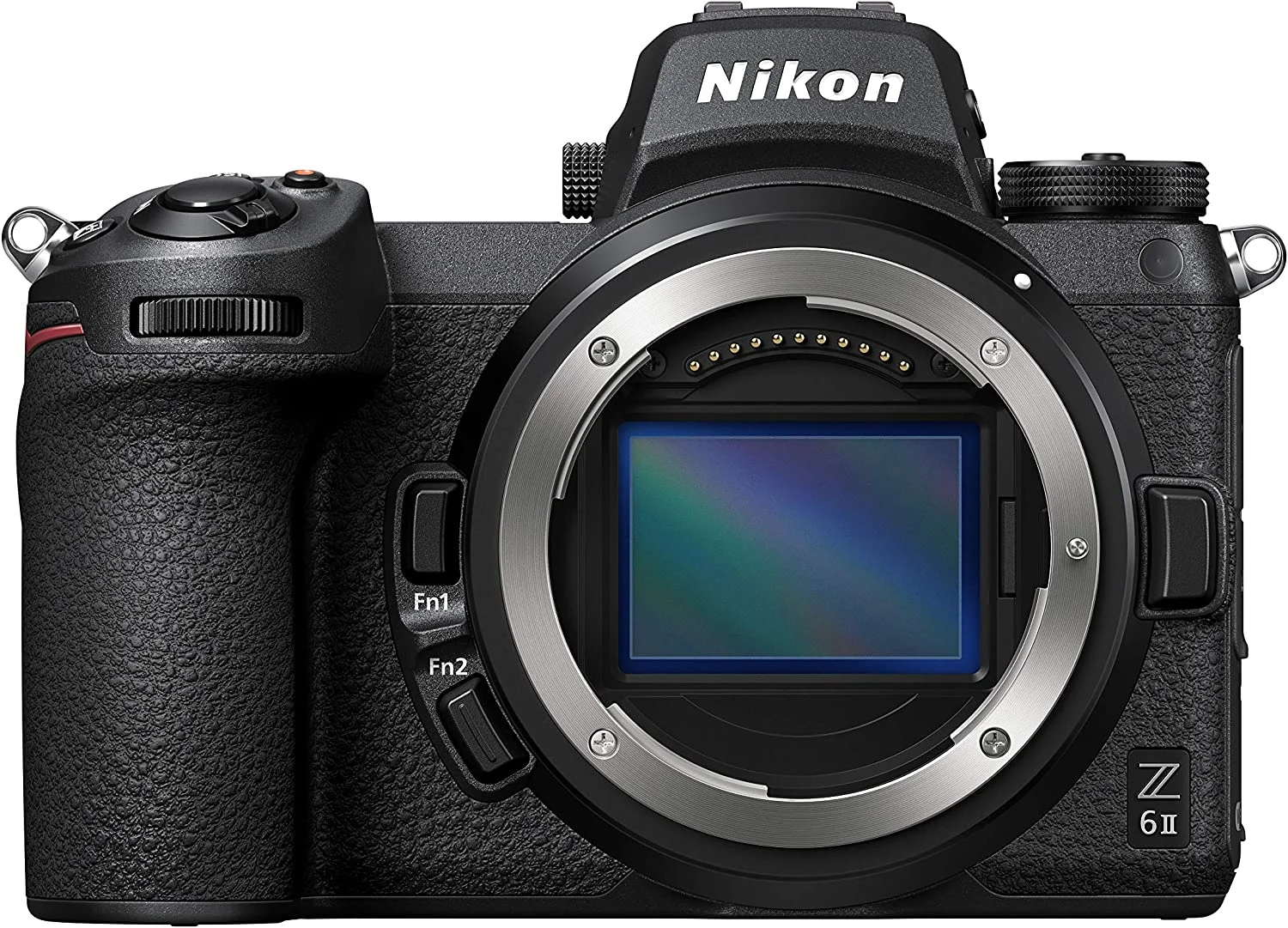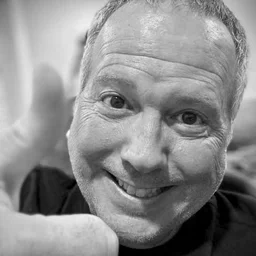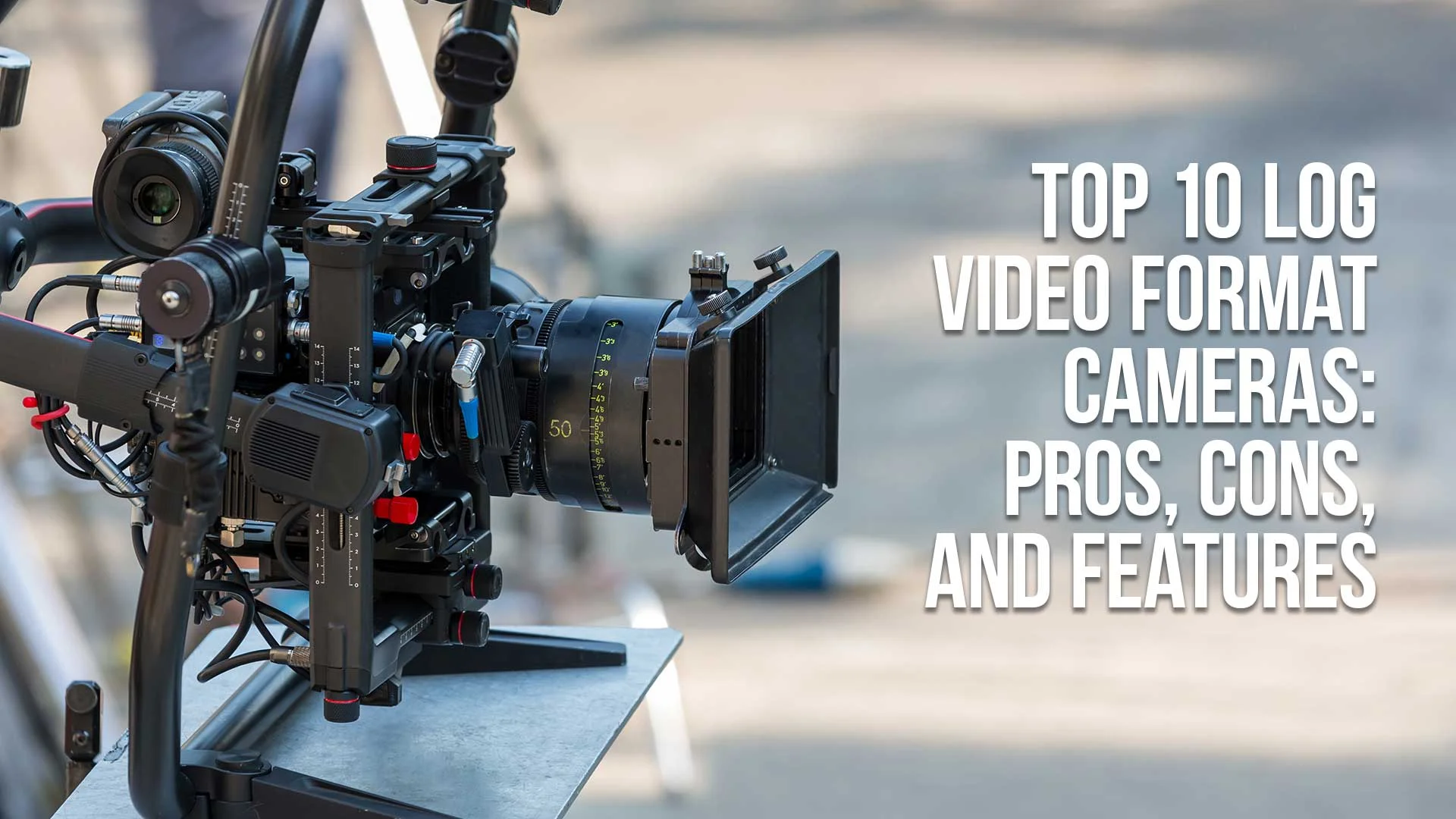Discover the best log video format cameras for filmmakers seeking cinematic image quality and maximum post-production flexibility.
In this comprehensive guide, we'll explore the top 10 cameras on the market, and their pros, cons, and unique features to help you make an informed decision.
Blackmagic Pocket Cinema Camera 6K

Pro: High-resolution Sensor
The Blackmagic Pocket Cinema Camera 6K features a Super 35 sensor with 6K resolution.
This high-resolution sensor enables filmmakers to capture stunning, detailed footage, ideal for large-scale productions and post-production flexibility.
Con: Limited Battery Life
A downside to the Blackmagic Pocket Cinema Camera 6K is its limited battery life. With only 45 minutes of continuous shooting on a single battery, you may need to invest in additional batteries or an external power source for longer shoots.
Feature: Dual Native ISO
One of the standout features of this camera is its dual native ISO.
With ISO ranges of 100-25,600 and 400-25,600, you can easily adapt to various lighting conditions without compromising image quality.
My Take on the Blackmagic Pocket Cinema Camera 6K:
As a colorist and an avid user of Blackmagic DaVinci Resolve, I like the hardware that Blackmagic makes. The cameras are affordable for independent filmmakers but produce amazing footage, especially when paired with great lenses.
I've colored a lot of footage from Pocket Cinema Cameras over the years and have always liked the latitude I get when color grading.
Panasonic Lumix GH5S

Pro: Excellent Low-Light Performance
The Panasonic Lumix GH5S excels in low-light conditions, thanks to its 10.2MP Micro Four Thirds sensor and Dual Native ISO technology.
This makes it an ideal choice for filmmakers who often work in challenging lighting environments.
Con: No In-Body Image Stabilization
Unlike its sibling, the GH5, the GH5S does not feature in-body image stabilization.
This could be a drawback for some users who require steady footage without relying on a gimbal or other stabilizing equipment.
Feature: V-Log L Included
The GH5S includes the V-Log L color profile, which allows for greater dynamic range and more flexibility in post-production.
This is a valuable addition for filmmakers looking to achieve a cinematic look in their projects.
My Take on the Panasonic Lumix GH5S:
I've used the Panasonic Lumix GH5S on several shoots and its low-light performance is impressive.
The lack of in-body stabilization can be a hurdle, but with a good gimbal, it's totally fine.
The V-Log L profile is a big plus, making color grading in post-production a straightforward task.
Canon EOS C200

Pro: RAW Recording
The Canon EOS C200 offers Cinema RAW Light recording, allowing filmmakers to capture high-quality, uncompressed footage for maximum post-production flexibility.
Con: Price Point
The C200 is a more expensive option compared to some of its competitors, which may put it out of reach for budget-conscious filmmakers or those just starting.
Feature: Dual Pixel CMOS Autofocus
One of the standout features of the Canon EOS C200 is its dual pixel CMOS autofocus system, providing fast and accurate focusing performance for both video and stills.
My Take on the Canon EOS C200:
Many of my expert shooter colleagues rely on the C200 for their commercial and creative production needs.
I've spent a lot of time in post coloring footage from the C200 and its image quality and ease of coloring are amazing.
Sony A7S III

Pro: Full-frame Sensor
The Sony A7S III boasts a full-frame sensor, enabling it to capture stunning, high-resolution footage with impressive dynamic range and low-light performance.
Con: Limited 4K Resolution
While the A7S III does offer 4K recording, it does not have the higher 6K or 8K resolutions offered by some competitors, which could be a limitation for certain applications.
Feature: S-Log3 and HLG Profiles
The A7S III includes S-Log3 and HLG color profiles, allowing for a wide dynamic range and providing more flexibility in post-production.
My take on the Sony A7S III
I've used footage from the Sony A7S III in various lighting conditions, and its full-frame sensor never let me down, especially in low light. The 4K resolution is sharp. The S-Log3 and HLG profiles are great for color grading, giving the footage a professional look with little effort.
RED Komodo 6K

Pro: Compact Design
The RED Komodo 6K features a compact and lightweight design, making it an attractive option for filmmakers who need a portable and versatile camera.
Con: Pricey Accessories
While the Komodo 6K itself is more affordable compared to other RED cameras, the cost of required accessories can quickly add up, increasing the overall investment.
Feature: Global Shutter
A standout feature of the RED Komodo 6K is its global shutter, which eliminates rolling shutter artifacts and ensures sharp, distortion-free footage.
My take on the RED Komodo 6K
I've used the RED Komodo 6K on a few projects and its compact design really stands out. It's easy to handle and set up, especially in tight spaces. The global shutter is a game changer, getting rid of rolling shutter issues, and the image quality is top-notch as expected from RED. The price of accessories did bump up the cost, but the investment was worth it for the footage quality and the ease of use.
Z CAM E2-F6

Pro: 6K Full-frame Sensor
The Z CAM E2-F6 offers a full-frame sensor with 6K resolution, providing impressive image quality and detail in a compact package.
Con: Limited Autofocus Capabilities
The E2-F6's autofocus capabilities are somewhat limited compared to other cameras on this list, which could be a drawback for those who rely heavily on autofocus for their projects.
Feature: Multiple Recording Formats
The Z CAM E2-F6 supports a variety of recording formats, including ProRes, H.265, and ZRAW, offering flexibility to filmmakers with different post-production workflows.
My take on the Z CAM E2-F6
I've worked with the Z CAM E2-F6 and its 6K resolution delivers crisp, clear footage. The compact body is easy to rig, saving time on set. The wide dynamic range captures scenes well, even in challenging lighting. It's a solid, budget-friendly option for high-resolution filming.
Nikon Z6 II

Pro: In-Body Image Stabilization
The Nikon Z6 II features in-body image stabilization, providing steady, smooth footage without the need for additional stabilizing equipment.
Con: External Recorder Required for ProRes RAW
To capture ProRes RAW footage with the Z6 II, an external recorder such as the Atomos Ninja V is required, adding to the overall cost and complexity of the setup.
Feature: N-Log and HLG Color Profiles
The Z6 II includes both N-Log and HLG color profiles, allowing for greater dynamic range and more flexibility in post-production.
My take on the Nikon Z6 II
Having shot with the Nikon Z6 II, I appreciate its strong autofocus and low-light performance. It handles noise well, making it reliable for indoor shoots. The dual card slots are a practical addition, providing a safety net for data. It's a dependable camera for both video and stills, without breaking the bank.
Fujifilm X-T4

Pro: Impressive Color Science
Fujifilm is known for its color science, and the X-T4 is no exception. The camera's film simulations and F-Log profile deliver beautiful, cinematic colors straight out of the box.
Con: APS-C Sensor
The X-T4 has an APS-C sensor, which may be a drawback for those looking for the depth of field and low-light performance offered by full-frame cameras.
Feature: In-Body Image Stabilization
The X-T4 features in-body image stabilization, helping to ensure smooth, steady footage without the need for additional stabilizing gear.
My take on the Fujifilm X-T4
The Fujifilm X-T4 has been a reliable companion on various shoots. Its in-body stabilization really helps in getting smooth shots, even when on the move. The color science is a highlight, delivering pleasing colors straight out of the camera which minimizes post-production work. It's a versatile tool for both video and photo work, making it a good all-rounder for various projects.
Blackmagic URSA Mini Pro 4.6K G2

Pro: High Frame Rates
The URSA Mini Pro 4.6K G2 offers high frame rates, allowing for smooth slow-motion footage at up to 300 fps in HD and up to 120 fps in 4.6K resolution.
Con: Weight and Size
The URSA Mini Pro 4.6K G2 is larger and heavier than many other cameras on this list, which could be a drawback for those seeking a more portable and lightweight option.
Feature: Built-in ND Filters
The camera features built-in ND filters, providing filmmakers with greater control over exposure and depth of field without the need for additional accessories.
My take on the Blackmagic URSA Mini Pro 4.6K G2
The URSA Mini Pro 4.6K G2 is a powerhouse for its size. I've found the 4.6K resolution to offer crisp, detailed footage, and the high frame rate options are great for slow-motion shots. The flexibility in codecs makes the post-production workflow smoother. It's a robust and reliable camera for professional video work, with features that support a wide range of shooting scenarios.
Canon EOS R5

Pro: 8K RAW Recording
The Canon EOS R5 is capable of 8K RAW recording, providing filmmakers with ultra-high-resolution footage for maximum post-production flexibility.
Con: Overheating Issues
Some users have reported overheating issues when recording at higher resolutions, which could be a concern for those planning to use the R5 for extended periods.
Feature: Dual Pixel CMOS Autofocus
Like the C200, the EOS R5 features Canon's dual pixel CMOS autofocus system, ensuring fast and accurate focusing performance for both video and stills.
My take on the Canon EOS R5
The Canon EOS R5 is a gem for high-resolution video work. Having used it on several shoots, the 8K resolution provides a lot of room for cropping and reframing in post. The autofocus is fast and reliable, which is crucial during run-and-gun shooting scenarios. It's a camera that blends well in a professional video setup while also being compact enough for solo projects.
Best Log Format Cameras Frequently Asked Questions
What is a log video format?
A log video format is a color profile that provides a flat, desaturated image with a wide dynamic range, making it easier to color grade and achieve a cinematic look in post-production.
How does a log video format improve dynamic range?
Log video formats capture more details in shadows and highlights by compressing the tonal range, allowing for greater flexibility in color grading and exposure adjustments in post-production.
Are log video formats suitable for beginners?
While log video formats offer many benefits, they require color grading in post-production, which may be challenging for beginners. However, learning to work with log formats can significantly improve the final look of your projects.
Can I use log video formats on any camera?
Not all cameras offer log video formats. However, many professional and semi-professional cameras include log color profiles, such as S-Log, V-Log, C-Log, and F-Log. Check your camera's specifications to see if it supports log video formats.
How does dual native ISO benefit low-light performance?
Dual native ISO allows a camera to switch between two different ISO circuits, optimizing noise performance and dynamic range in various lighting conditions. This results in cleaner, better-quality footage in low-light situations.
What is the difference between global shutter and rolling shutter?
A global shutter captures an entire frame simultaneously, eliminating motion artifacts and distortion. In contrast, a rolling shutter scans the frame line by line, which can cause distortion in fast-moving subjects or when the camera moves quickly.
Why is in-body image stabilization important for video?
In-body image stabilization compensates for camera shake and movement, resulting in smoother, more stable footage without the need for additional stabilizing equipment such as gimbals or tripods.
What is the advantage of using a full-frame sensor for video?
A full-frame sensor provides a larger surface area for capturing light, resulting in better low-light performance, shallower depth of field, and a wider field of view compared to cameras with smaller sensors.
How do I choose the right log video format camera for my needs?
Consider factors such as sensor size, resolution, dynamic range, color profiles, low-light performance, and in-body image stabilization when choosing a log video format camera. Additionally, take into account your budget and the camera's compatibility with your existing gear.
Do I need an external recorder for log video format cameras?
An external recorder is not always necessary but can offer advantages such as higher-quality codecs, increased recording times, and ProRes RAW compatibility. Check your camera's specifications and your desired recording format to determine if an external recorder is required.

About the Author
Joseph Nilo has been working professionally in all aspects of audio and video production for over twenty years. His day-to-day work finds him working as a video editor, 2D and 3D motion graphics designer, voiceover artist and audio engineer, and colorist for corporate projects and feature films.
Parent Article:
Log Video Formats Reference Guide
Related Articles:
The Evolution of Log Video Formats
Demystifying Log Video Formats
Log Video Formats vs. Traditional Video Formats
Top 10 Log Video Format Cameras
Color Grading Techniques for Log Video Formats
The Impact of Log Video Formats on Modern Cinematography
Mastering Post-Production Workflows for Log Video Formats
Best Practices for Archiving and Storing Log Video Format Files
Video Editing Related Posts
Adobe Creative Cloud for Video Editing
Top 10 Video Editing Software for Mac
The Benefits of Dual-Monitor Setups for Video Editing
How to Choose the Right Video Editing Monitor for Your Needs
Best Monitors for Video Editing
Best Video Editing Software in 2023
Best Mac for Video Editing in 2023
(Almost) 50 Mistakes Every New Video Producer Makes
Breakthrough AI Tools: Elevate Your Video Production Game!
- Blackmagic Pocket Cinema Camera 6K
- Panasonic Lumix GH5S
- Canon EOS C200
- Sony A7S III
- RED Komodo 6K
- Z CAM E2-F6
- Nikon Z6 II
- Fujifilm X-T4
- Blackmagic URSA Mini Pro 4.6K G2
- Canon EOS R5
- Best Log Format Cameras FAQ
Parent Article:
Log Video Formats Reference Guide
Related Articles:
The Evolution of Log Video Formats
Demystifying Log Video Formats
Log Video Formats vs. Traditional Video Formats
Top 10 Log Video Format Cameras
Color Grading Techniques for Log Video Formats
The Impact of Log Video Formats on Modern Cinematography
Mastering Post-Production Workflows for Log Video Formats
Best Practices for Archiving and Storing Log Video Format Files
Video Editing Related Posts
Adobe Creative Cloud for Video Editing
Top 10 Video Editing Software for Mac
The Benefits of Dual-Monitor Setups for Video Editing
How to Choose the Right Video Editing Monitor for Your Needs
Best Monitors for Video Editing
Best Video Editing Software in 2023
Best Mac for Video Editing in 2023
(Almost) 50 Mistakes Every New Video Producer Makes
Breakthrough AI Tools: Elevate Your Video Production Game!
